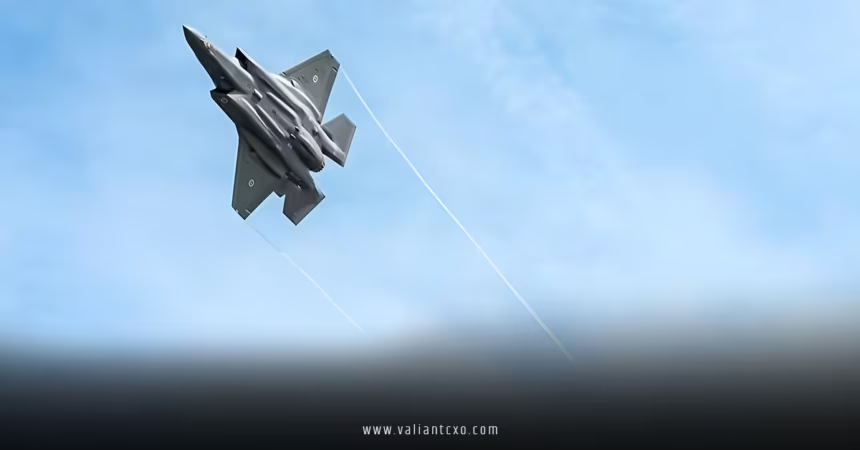NATO response to Russian drone incursion in Poland September 2025 has thrust the alliance into the spotlight like a sudden storm over the Baltic plains, reminding us all how fragile the line between proxy wars and direct confrontations can be. Imagine you’re sipping coffee in Warsaw, glancing out at the crisp autumn sky, when suddenly air raid sirens wail—Russian drones, those shadowy buzzers of modern warfare, have slipped across the border like uninvited ghosts at a family reunion. That’s the chaos that unfolded in early September 2025, and boy, did it wake everyone up. As someone who’s followed these geopolitical chess games for years, I can tell you this wasn’t just another blip on the radar; it was a deliberate poke, testing NATO’s nerves and resolve. In the days that followed, the alliance didn’t flinch—it roared back with jets in the air, consultations in bunkers, and a beefed-up presence that’s got the whole eastern flank buzzing. But let’s dive deeper, shall we? What sparked this incursion, how did NATO clap back, and what does it mean for the fragile peace we’re all clinging to?
What Sparked the Russian Drone Incursion in Poland September 2025?
Picture this: It’s the dead of night on September 9-10, 2025, and Russia’s unleashing a barrage of missiles and drones on Ukraine—over 500 of them, one of the biggest salvos yet. Amid the chaos, at least 19 Russian Gerbera loitering munitions, those cheap, kit-built kamikaze drones assembled from Chinese parts in Tatarstan, veer off course. Or do they? They don’t just graze the border; they plunge deep into Polish airspace for over seven hours, buzzing over villages near Lublin and even clipping rooftops in Wyryki. One crashes into a house, another mangles a car—thankfully no lives lost, but the message is crystal clear: We’re here, and we’re watching.
You have to wonder, was this a glitch in the matrix, or a calculated flex? Polish officials, from Prime Minister Donald Tusk down to the generals in the operational command, called it straight-up aggression. “A large-scale provocation,” Tusk thundered in parliament, his voice echoing the gravity of the moment. These weren’t your garden-variety stray shots; these drones had extra fuel tanks, suggesting they were rigged for range, slipping in via Belarus like smugglers in the fog. And let’s not forget the timing—right on the heels of Russia’s Zapad 2025 exercises with Belarus, those massive war games that always feel like a veiled threat to the neighborhood.
As I sift through the fog of this event, it’s hard not to draw an analogy to a bully testing the playground rules. Russia denies intent, of course—their Defense Ministry spins it as “no plans to target Poland,” blaming jammed signals or Ukrainian interference. But come on, 19 breaches over hours? That’s not a whoopsie; that’s a probe. Ukrainian intelligence backs the Polish take, pointing fingers at Moscow’s Yelabuga factory churning out these Gerberas. And here’s the kicker: This isn’t isolated. Just weeks later, on September 28, Poland’s scrambling jets again as Russia hammers Kyiv with nearly 600 drones and 48 missiles, forcing a brief airspace shutdown. Coincidence? Or a pattern in the making?
The Swift and Decisive NATO Response to Russian Drone Incursion in Poland September 2025
When those drones crossed the line, NATO didn’t hit the snooze button—it sprang into action like a well-oiled machine, the kind you’ve seen in those tense Tom Clancy thrillers. Within minutes, Polish F-16s were airborne, backed by Dutch F-35s on quick-reaction alert. Italian and German assets joined the fray too, a multinational ballet of steel and speed. Up to four drones got zapped mid-air, their wreckage raining down like confetti from a grim party. “Our air defenses were activated and successfully ensured the defense of NATO territory,” NATO Secretary General Mark Rutte declared in a crisp statement that same day, his Dutch pragmatism cutting through the panic.
But it wasn’t just jets in the sky; the alliance kicked into high gear on the ground. Poland invoked Article 4 of the Washington Treaty—the big red consultation button for threats to territorial integrity—marking only the eighth time since 1949. Emergency North Atlantic Council meetings buzzed with urgency, allies hashing out responses in real-time. Rutte called the incursion “reckless behavior,” whether deliberate or not, underscoring that every inch of NATO soil is sacred ground.
Activation of Article 4: A Wake-Up Call for the Alliance
Let’s zoom in on Article 4—it’s not the nuclear-option Article 5, but it’s no slouch either. When Tusk hit that trigger, it signaled to Moscow: We’re talking, and we’re united. Consultations wrapped up swiftly, leading to tangible moves. The Netherlands and Czech Republic pledged air defenses to Poland’s eastern borders, while Germany ramped up its brigade in Lithuania and extended air policing missions. It’s like fortifying the castle walls just as the siege engines roll up—proactive, not reactive.
Rutte, in his post-meeting presser, praised the “impressive” coordination: “I think last night showed that we are able to defend every inch of NATO territory, including its airspace.” No small feat, considering this was the first time NATO planes engaged enemy targets over alliance turf since the Ukraine war kicked off in 2022. And the U.S.? Senator Dick Durbin nailed it: “Repeated violations… are fair warning that Vladimir Putin is testing our resolve.” The Yanks, ever the backbone, echoed calls for enhanced posture.
Unpacking the Motives: Why Target Poland in the NATO Response to Russian Drone Incursion in Poland September 2025 Context?
Alright, let’s get real—why Poland? Why now? Russia’s not blind; they know Poland’s the feisty frontliner, pumping aid to Ukraine and hosting NATO’s beefiest eastern deployments. This incursion feels like a Kremlin stress test, gauging how far they can push without tripping the Article 5 wire. Experts like Vice-Admiral Mark Mellett, ex-head of Irish defenses, put it bluntly: Moscow’s “checking the integrity” of NATO’s defenses with low-risk tools like unarmed Gerberas—no casualties, no escalation jackpot, just enough to rattle cages.
Think of it as a poker bluff: Raise the stakes incrementally, see who folds. Polish Foreign Minister Radosław Sikorski called it a bid to “test NATO’s reactions by incremental escalations without prompting a full-scale response.” And it worked, in a twisted way—exposing fissures. Some allies, like Hungary’s Viktor Orbán, hemmed and hawed, while others bayed for blood. Trump, never one to mince words, quipped on Truth Social: “What’s with Russia violating Polish airspace?”—hinting at mistakes but stoking the debate.
Broader picture? It’s all tied to Ukraine’s grinding counteroffensives and faltering peace talks. Zelenskyy warned post-incursion that Putin’s aggression “may spread beyond Ukraine,” and damn if it didn’t feel prophetic when Romania reported its own drone buzz on September 14—two F-16s scrambled there too. NATO’s not buying the “stray” narrative; it’s seeing a pattern of hybrid harassment, from Baltic undersea cables to Danish airport radars popping up anti-drone tech.

Broader Implications: How the NATO Response to Russian Drone Incursion in Poland September 2025 Reshapes the Eastern Flank
This isn’t just a Polish headache—it’s a seismic shift for NATO’s eastern bulwark. Post-incursion, the alliance greenlit “Eastern Sentry,” a beefed-up operation deploying more warplanes, Patriot batteries, and intel-sharing networks across Poland, the Baltics, and Romania. Denmark’s installing military-grade anti-drone radars at Copenhagen’s Kastrup Airport, a direct nod to Baltic incursions. It’s like upgrading from a picket fence to a razor-wire fortress overnight.
Economically? Poland’s airspace closures hit flights hard—Lublin and Warsaw hubs grounded, SMS alerts pinging civilians to hunker down. But the real cost is psychological: Tusk’s chilling words, “closest to open conflict since World War II,” hang heavy. Allies are pouring in: France, UK, Germany, Canada—all condemning the act, with Berlin vowing to “intensify engagement along NATO’s eastern border.”
And let’s talk tech—these Gerberas, cheap as $20,000 a pop, expose vulnerabilities in drone warfare. NATO’s response? A push for the EU’s “Drone Wall,” a detection-and-destroy net from the Baltic to the Black Sea. It’s innovative, sure, but pricey—billions in upgrades, training, and AI-driven spotters. As one X post from a military watcher put it: “Russia will regret… NATO will build up even STRONGER.” Hyperbole? Maybe, but the momentum’s real.
Voices from the Trenches: Expert and Leader Reactions
I couldn’t resist pulling in some raw takes. Zelenskyy, ever the firebrand, tweeted: “Putin’s drones don’t respect borders—neither should our resolve.” On the flip side, Russian charge d’affaires Andrey Ordash dismissed it as “groundless,” demanding evidence. BBC Verify dug into the wreckage: 16 sites confirmed, Shahed-style debris scattered like puzzle pieces.
Experts chime in too. The International Institute for Strategic Studies (IISS) dubbed it “the paradox of Russian escalation,” where probes like this fatigue allies without full war. Clingendael Institute warns it means “big trouble for NATO unity.” Even Trump weighed in, probing if it was a “mistake”—sparking backlash from Sikorski: “Too many drones for that.”
Social media’s a wildfire: Anadolu Agency posted jets scrambling visuals, while OSINT accounts dissected radar tracks. One viral thread from @k_c_shivansh broke down the 19 breaches hour-by-hour—fascinating stuff, if you’re into that granular grit.
Allied Coordination in the NATO Response to Russian Drone Incursion in Poland September 2025
No hero acts here—it’s all about the team. Dutch F-35s stole the show, their stealth slicing through the night to nail those drones. Italy’s Eurofighters provided overwatch, Germans handled logistics. Post-event, Czechia’s sending S-400 analogs, Netherlands more Patriots. It’s a symphony of support, proving NATO’s not just talk.
Lithuania gets a German brigade boost, Romania early warnings on cross-border strikes. Even non-NATO players like Moldova are jittery, reporting fragments. This web of aid? It’s what makes the alliance tick—32 nations, one shield.
Rhetorical question time: What if one drone had packed explosives? Would we be penning eulogies instead? Thankfully, the unarmed nature kept it contained, but it lit a fire under laggards. Hungary’s muted, but pressure’s mounting—unity’s the only play.
Future Horizons: Anticipating Escalations Post NATO Response to Russian Drone Incursion in Poland September 2025
Staring down the barrel, what’s next? Zapad 2025 wraps soon, but expect more “tests”—maybe cyber jabs or sub incursions. NATO’s eyeing AI countermeasures, drone swarms of our own. Peace talks? Stalled, with U.S.-led pushes fizzling. Biden’s admin (or whoever’s in by then) faces calls for tougher sanctions, more Ukraine aid.
For Poland, it’s bunker-building: Tusk’s pushing EU funds for border forts. Regionally, the Baltics are wiring up that Drone Wall, Estonia leading with laser tech. Me? I see this as a pivot— from deterrence to readiness. Russia’s betting on fatigue; NATO’s countering with steel.
As tensions simmer into October, watch the UN Security Council—Poland’s emergency meet on September 12 yielded zilch from Russia, but it spotlit the hypocrisy. Will it deter Putin? Doubtful. But it steels spines, reminding us: In this game, hesitation’s the real killer.
Conclusion: Standing Firm in the Face of Shadows
Wrapping this up, the NATO response to Russian drone incursion in Poland September 2025 wasn’t flawless, but it was fierce—a testament to alliance grit amid creeping shadows. From jets downing drones to Article 4 activations and eastern reinforcements, we’ve seen unity trump provocation. Russia’s probe exposed cracks, sure, but it also forged steel. As we navigate this powder-keg autumn, remember: Awareness is our best weapon. Stay informed, question the spins, and push for peace that packs a punch. What’s your take—escalation or off-ramp? Either way, the world’s watching, and so should you.
Frequently Asked Questions (FAQs)
What exactly triggered the NATO response to Russian drone incursion in Poland September 2025?
It all kicked off with 19 Russian Gerbera drones breaching Polish airspace during a massive Ukraine assault on September 9-10, 2025—seen as a deliberate test, prompting jets and Article 4.
How many drones were involved in the Russian drone incursion that prompted NATO’s reaction?
Reports confirm at least 19 incursions over seven hours, with up to four shot down by Polish and allied forces, scattering wreckage across eastern Poland.
Did the NATO response to Russian drone incursion in Poland September 2025 involve any casualties?
Luckily, no—the drones were unarmed scouts, causing property damage but no injuries, which kept the escalation in check.
What long-term changes came from the NATO response to Russian drone incursion in Poland September 2025?
Expect more deployments: “Eastern Sentry” ops, Drone Wall tech, and enhanced air policing to shield the flank from future probes.
Is the Russian drone incursion in Poland September 2025 linked to broader Ukraine tensions?
Absolutely—it’s tied to ongoing strikes and Zapad exercises, with experts viewing it as Moscow’s way to pressure NATO without full war.
For More Updates !! : valiantcxo.com


